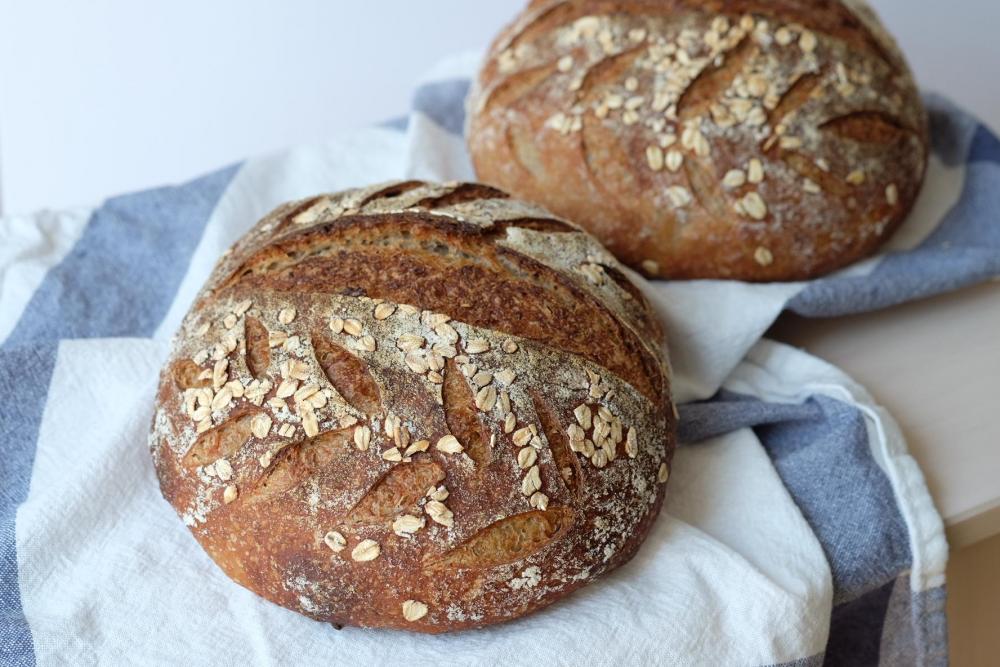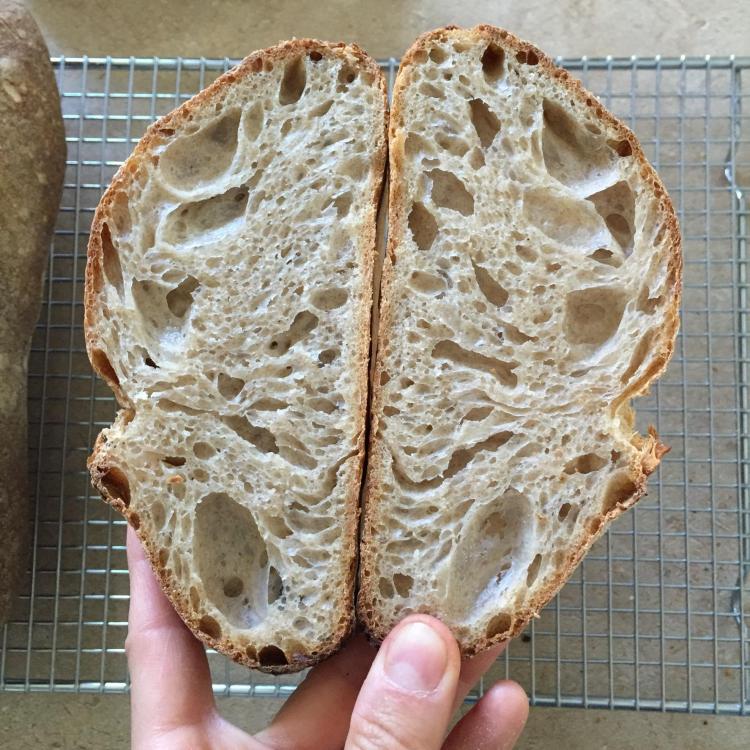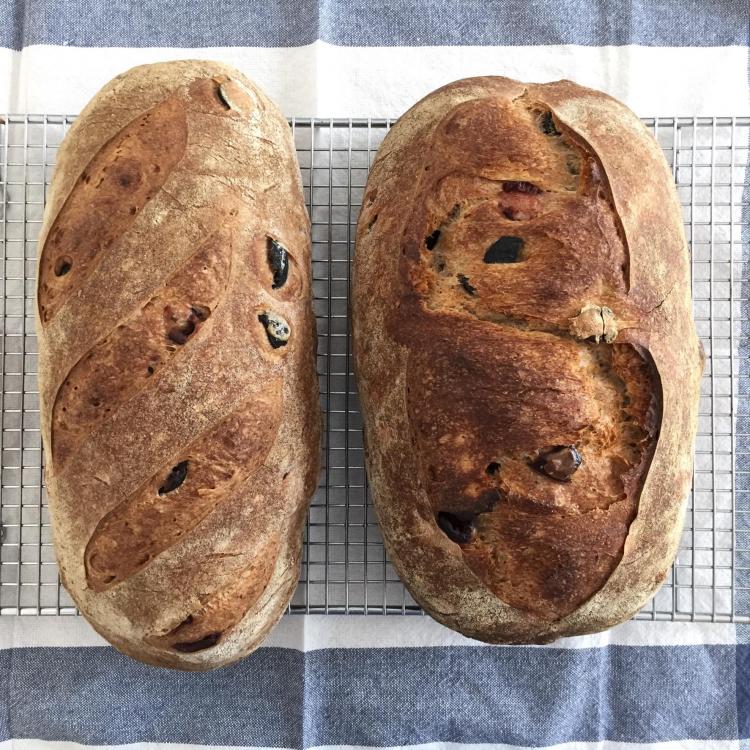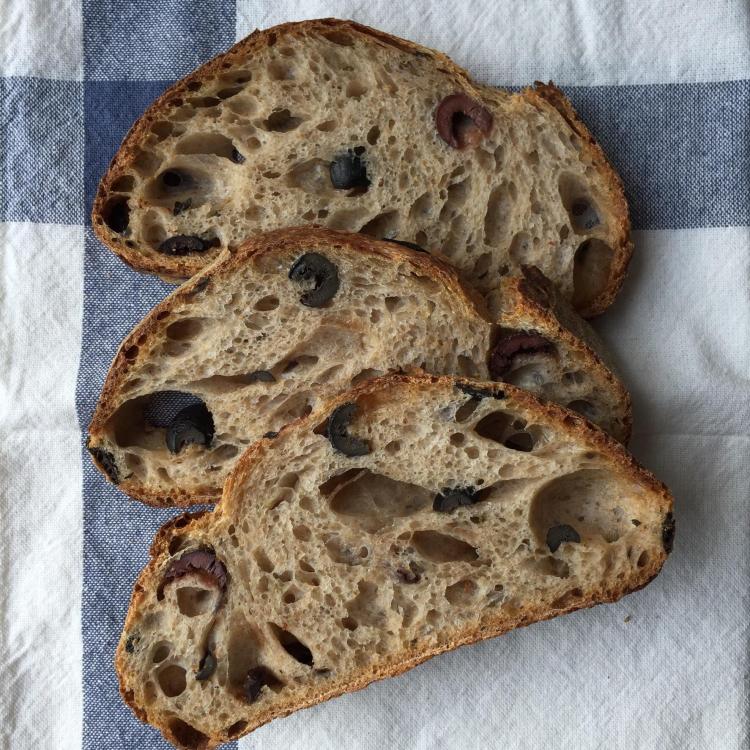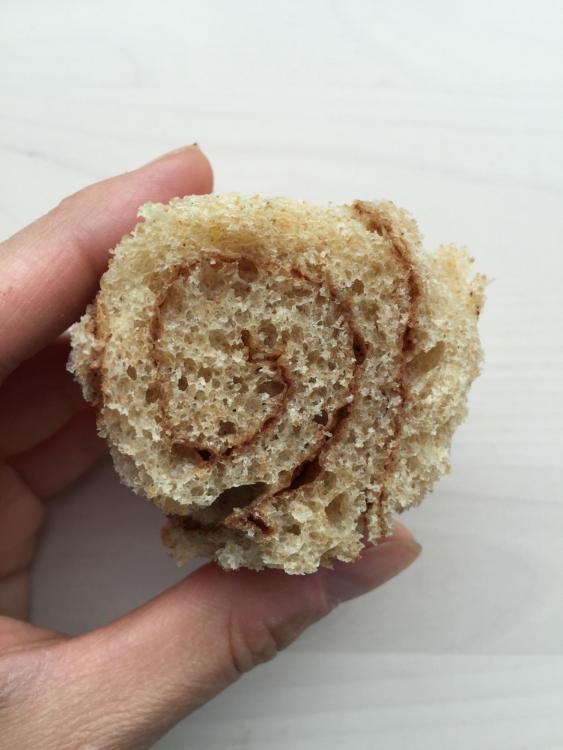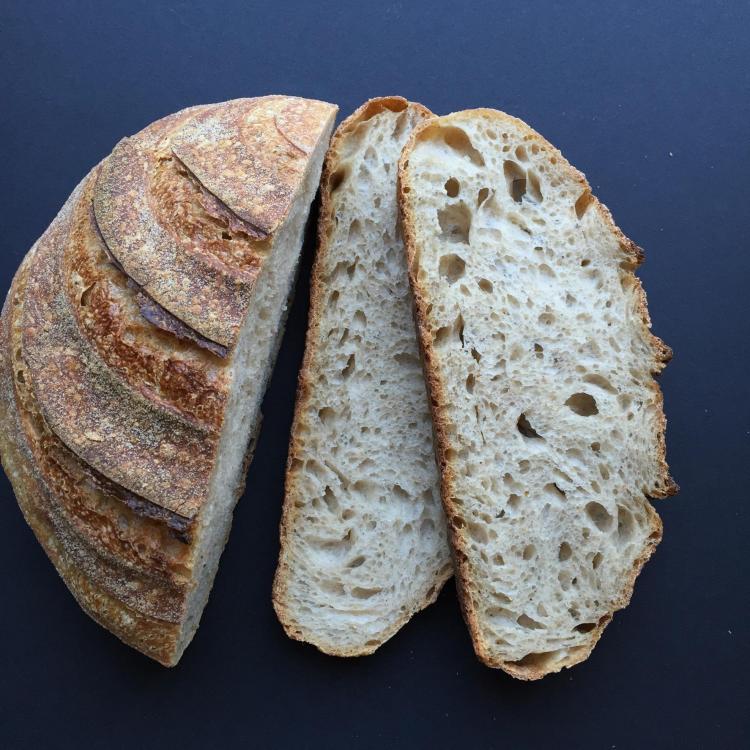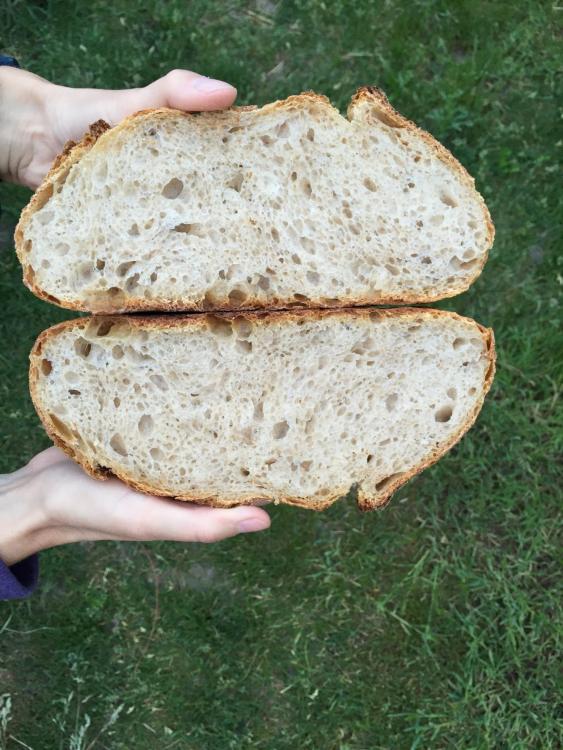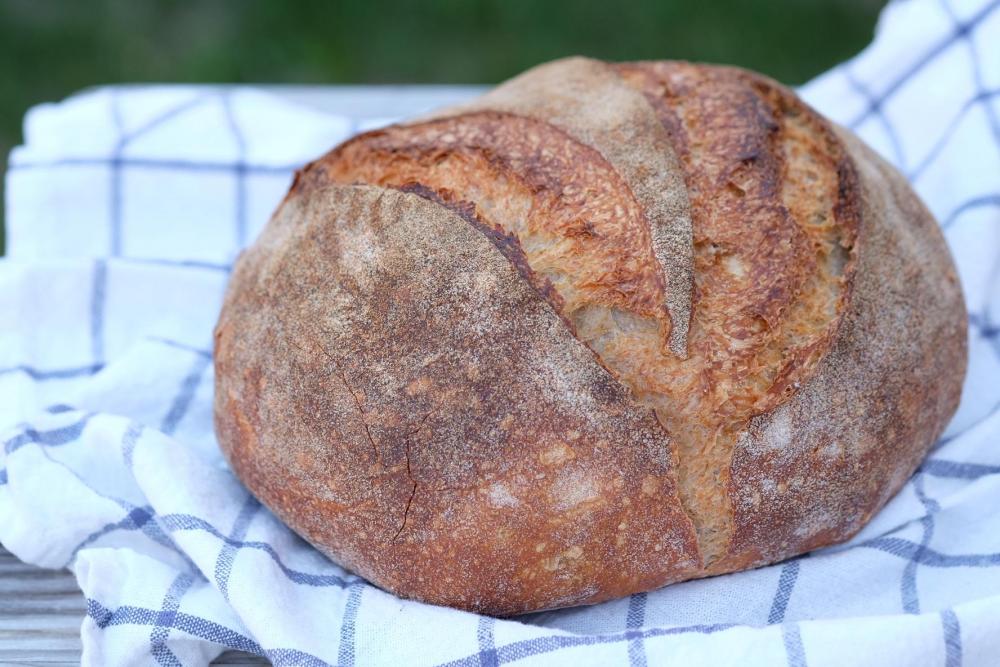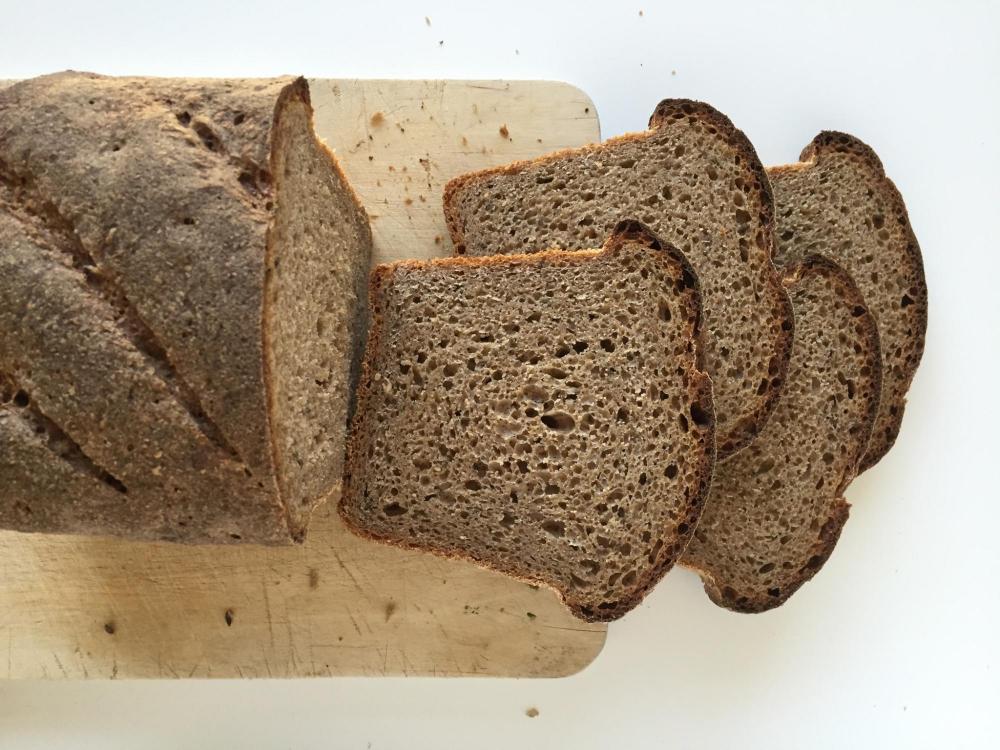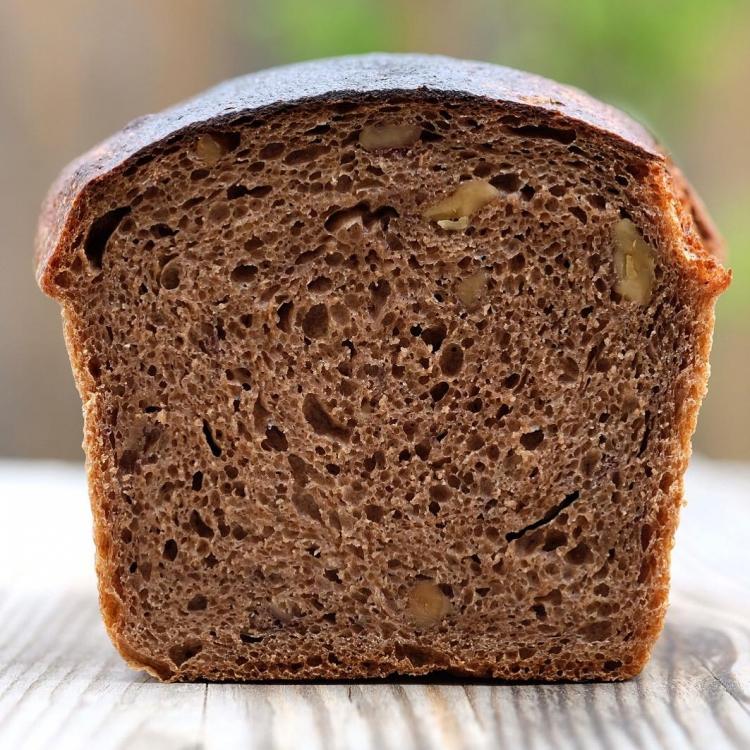-
Posts
300 -
Joined
-
Last visited
Profile Information
-
Location
Ontario, Canada
Recent Profile Visitors
The recent visitors block is disabled and is not being shown to other users.
-

Establishing and Working with Homegrown Sourdough Starter
DianaM replied to a topic in Pastry & Baking
My favourite flours come from 1847 Stone Milling. They freshly mill (on a stone mill from 1847) organic grains that they grow themselves, the flour is not bleached nor fortified. The flour is excellent, you just have to account for the fact that it's fresh and behaves a bit differently than even the ww you buy in the store. I think you'd love their Daily Bread flour - it is not labelled as whole wheat, but it is as dark as any ww (milled from red wheat) I've seen. I always buy that, their ww, and also the Daily Grind (their "AP" flour) - and this too is pretty dark. I used their kamut flour and it was amazing, but they're out. Arva Flour Mills in London, ON is also making fresh flours (including ww), but theirs are not organic. I also tried La Milanaise flours from Bakers & Us (wholesalers) but they came in 20lb bags and honestly, I was not impressed with the flour. Although I absolutely love the flavour or whole grains, I found that for myself and my family, I've had the best results when I added a percentage of AP flour (our Canadian AP is excellent, imo) to help with "lift" and to tame the "wholegrain-iness" a bit, but you of course will decide where you want to go with your recipes. I will be happy to answer any questions you have. I hope this is not too OT for this thread, and if it is - oops! -

Establishing and Working with Homegrown Sourdough Starter
DianaM replied to a topic in Pastry & Baking
I do it to maintain an increased rate of fermentation and to minimize the window when the culture is in a deflated, sub-optimal state. During that time, the acids build up and give the starter an alcoholic and acetic punch which I personally dislike (Smithy aptly called it "hoochy"). These flavours also transfer to the finished bread, and neither are flavours I am to achieve in the finished loaf. I'm going for a subtle lactic tang, sweetness and nuttiness from the whole grains, a toasted note from seeds etc. According to Tartine no.3, "two days before you want to make bread, feed the matured starter twice daily, once in the morning and once in the evening, to increase fermentation activity." My favourite author, Sarah Owens in her excellent Sourdough, advises the same for people who bake bread frequently. Since I bake bread almost every 2 days (yeah I know it's inefficient but I love it!), that works out to a continuous 12h schedule, which is what I do. You could, of course, achieve the same result with a 24h feeding schedule provided you reduce the inoculation rate (so use maybe a 1:8:8 ratio), but I have found that the 12h routine gives me the best flavour. When I left the country for a week, I did put it in the fridge. And when circumstances prevent me from baking bread for a week, then I feed on a 24h schedule (I never did that in the first few months of tending to my starter, though). Occasionally, I will get lazy too and eyeball a feed or two. But regularly, I do what I described above: 12h, 1:4:4. As for the frontier, I am sure they had lots to worry about besides the optimal fermentation of their starter (rustwood, you got me researching the stories of frontier settlement doctors, thank you for that! ). We live a life of privilege, and for me, tending to a lump of flour is, luckily, no big feat, even if I do have to employ a scale. -

Establishing and Working with Homegrown Sourdough Starter
DianaM replied to a topic in Pastry & Baking
Hi Soupcon, When your starter has reached maximum volume (at least double) it is ready for feeding. So yes, I think you should go on a 12-hour feeding routine at this point. I typically feed mine every 12 hours, I noticed it gives me the best breads as compared to 24h feedings. I use a ratio of 1:4:4 (starter : water : flour) and in the summer even 1:5:5, and my standard is 5 g starter to 20 g water and flour respectively. At this feeding schedule and ratio, it triples in volume in 6-8 hours depending on ambient temp. I'd wait a few more days before baking with it. It is usually ready for use after cca 7 days, but if you can wait a few more than that, all the better. Use this time to observe your starter's rise so that you have fewer surprises (in terms of rising times) when you start baking with it. -
@Kerry Beal Kerry, where could I find a pullman pan that does not cost a fortune? I looked at amazon, they sell USA Pan pullmans in two sizes, but dang! They cost their weight in gold. It would not see very much use, but I'd like to try one for a high-percent rye loaf. Diana
-
I've bookmarked a few of Sarah Owens's recipes from her book, and this is the first bread that I made, honeyed oat and spelt levain. It contains a good amount of large flake oats, and some wholegrain spelt flour, and this makes for a tighter crumb. The honey is just enough to offset the light sour and give another subtle flavour dimension the crust. If I hated sourdough, I feel this loaf would change my mind.
-

Your Daily Sweets: What Are You Making and Baking? (2015 – 2016)
DianaM replied to a topic in Pastry & Baking
Thank you, @cakewalk. Yes, that plunger got very light action, otherwise we too got dismembered animals. The flour is a mix; the bulk of it is large flake oats and raw buckwheat groats pulverized in the blender and mixed with almond meal, and there is also arrowroot starch to lighten things a bit. Recipe here. -
Host's note: this is part of a large topic that has been split into smaller segments to reduce the load on our servers. The previous segment may be found here: The Bread Topic (2015-2016). I've been trying to settle on a formula for a nice, basic, no frills sourdough which my friends (with zero interest in whole grains) can enjoy, and I think I've found my winner in a country white (10% w/g spelt) with 80% hydration. Mild, mild sourness despite the 12 hour cold proof. I want to try holding back some of the water to see if I can achieve better loft, but otherwise, I am happy with the formula.
-
How is the starter doing, @paulraphael? Sorry about my delay in responding, I hope my answer will still prove useful. I have Reinhart's book, and I love it for yeasted stuff, but for sourdough, I myself look elsewhere. How do you like your cookbooks? Dependable? Technical? Full of pictures? Modern? -clear and detailed information, dependable formulas and a quiet but contagious love for the craft of breadmaking - J. Hamelman's Bread. If I have a question about sourdough, it's the first reference I check. JH is the Bakery Director at King Arthur Flour, if I'm not mistaken. There are very useful step-by-step drawings, but don't expect many pictures, and you gotta love arithmetic because every formula is given in oz/g for a production environment (10 loaves etc), and only in cups for 1-2 loaves. I can PM you a pic of a formula if my description is not clear. It is technical, yes, however I would not call the book "modern." -if you love whole grains check out Tartine nr. 3, by Chad Robertson of the famous Tartine bakery in SF. Definitely modern, the book looks beautiful to me, with its full-page images of incredible crumb shots, but the doughs are so very wet, and I feel my skills level is inadequate at this point (unless I change the formula by holding back some of the water). I love the idea of porridge bread, I just have not been able to successfully make one yet. Bonus points for the wholegrain pastry chapter, it's something valuable to me. -I've received in the mail just days ago Sarah Owens's Sourdough. She has won a James Beard award for it. Rustic breads, and other baked goods made with leftover starter (madeleines, pies, savoury tarts, sablés, a bundt, couple cakes etc). Very interesting formulas, there's a nettle and ale bread, smoky chili bread, a turmeric and leek levain, blue corn pain épi. Beautifully photographed. Whole grains. Botanical Latin in the recipe notes. What's not to love?!? Lol. Online: -the blogs: http://www.wildyeastblog.com and https://www.theperfectloaf.com -I think @keychris has mentioned http://www.thefreshloaf.com -youtube for shaping videos (I believe Cyril Hitz has a couple up there and the SFBI) -instagram if you want to stare at bread pics - I admit I do Host's note: this topic has been split into multiple segments to reduce the load on our servers. To see the next delicious installment, click here.
-

Your Daily Sweets: What Are You Making and Baking? (2015 – 2016)
DianaM replied to a topic in Pastry & Baking
Animal crackers for son. I love the challenge of baking *-free, so these are gluten-free, vegan, and made with unrefined sugars. Son didn't seem to mind.- 486 replies
-
- 21
-

-
Olive levain from J. Hamelman's book, with some changes. Built yesterday, cold proofed, then baked today. I used a mix of Kalamata, salt-cured and regular black olives, and also added lemon zest and herbes de Provence. @DianaB I, too, stuggle with scoring. I scored the two loaves differently and learned what a dramatic effect it has on the final shape. These two are the same dough, same quantity (I weighed each), treated in the exact same way apart from scoring. The slices are from the loaf on the right. It must be my lucky day, I don't usually get a crumb like that.
- 492 replies
-
- 14
-

-
Thank you, @shain for your comment. I made some cinnamon rolls and, of course, more bread. The rolls are made entirely of spelt, I had some light spelt at the bottom of a bag nearing the best before date, and added some wholegrain spelt too. I subbed coconut oil for the butter, and coconut milk (from a carton) for regular (son's eczema is aggravated by dairy). It worked really well, fermentation went really fast, so either yeast looooves coconut, or the wholegrain spelt gave it a boost. Either way, bulk was 1 hour, and proofing took half hour. Oh, and added some chai spice into the cinnamon mix, thought it'd work well with all the coconut. Not an easy dough to work with, they looked a bit ragged going in the oven, but it all worked out. They were so light in the hand, lotsa yummy air in those alveoli. And again the pain au levain with whole wheat, it's my husband preferred bread, so I wanted to be nice and made it for him.
- 492 replies
-
- 12
-

-
What is the hydration of your starter currently? And how long will you be gone? You can make a stiffer starter (dial down the hydration little by little if you keep it 100%) and after the last feed before you go, leave it out on the counter a little while to get it fermenting. Then you refrigerate it. Mine was ok after three weeks in the fridge like this. Because I love my starter very, very much I also made a "back-up copy" for the freezer. I dried it like in the link above, and then put it in a sealed bag in the freezer. I left it there for a year, and it was still viable after all that time.
- 7 replies
-
- Bread
- Troubleshooting
-
(and 1 more)
Tagged with:
-
I've baked two batches of bread this past week, one was the pain au levain with whole wheat flour from Jeffrey Hamelman's "Bread," and the other a 66% rye sourdough pan loaf with caraway seeds. I loved both, for different reasons. The pain au levain could have used a bit more proofing, I think, judging by the look of the crumb. As for the rye, I was very happy with how it turned out, except that the dough was a bit too much for the pan. You can see how it "muffin-topped" instead of remaining below the rim of the pan to get a nice, neat loaf. I expected it to be much denser, but I am glad I was wrong. What I love most about it is its keeping qualities: it was 2 days old today and if anything, it was better than the day before. Had it with tapenade and soft-boiled egg for lunch and it was so good!
- 492 replies
-
- 15
-

-
Thank you, Franci! It was a very entertaining experience, although at the time it didn't seem so. To be honest, I expected the worst when the gas ran out (like gooey, raw bread) and I was pleasantly surprised by the crumb when I cut into it.
-
I call this one Scorch Trials. It is a 100% wholegrain spelt sourdough pan loaf with walnuts (recipe from Josey Baker Bread). I mixed the leaven on Friday evening, and Saturday morning, when I needed to toast the walnuts, the oven would not start. Toasted the nuts on the bbq, and decided if the oven continued to misbehave, I'd bake the bread on the grill too. All attempts to resurrect the oven failed, so I preheated the grill and lay the bread inside with some trepidation. About 30-35 mins into the bake, the gas in the propane tank of the bbq ran out, and I watched as the temp indicator started its slow descent towards zero. A few choice words were uttered. So I started the broiler (oddly, the broiler function of the oven was still working), and basically pre-heated the oven with it. I put the bread on the lowest rack, broiler on low, but after about 10 mins, the top was so scorched that I decided to end this crazy-a** experiment, whether the bread was baked through or not. It is a delicious loaf, the crumb is spongy and tender, with just a bit of sour when you first bite into it. I love whole grains! Spelt (wholegrain) makes such an interesting dough to work with, stretchy and obedient. I will be making this one again.
- 492 replies
-
- 14
-



